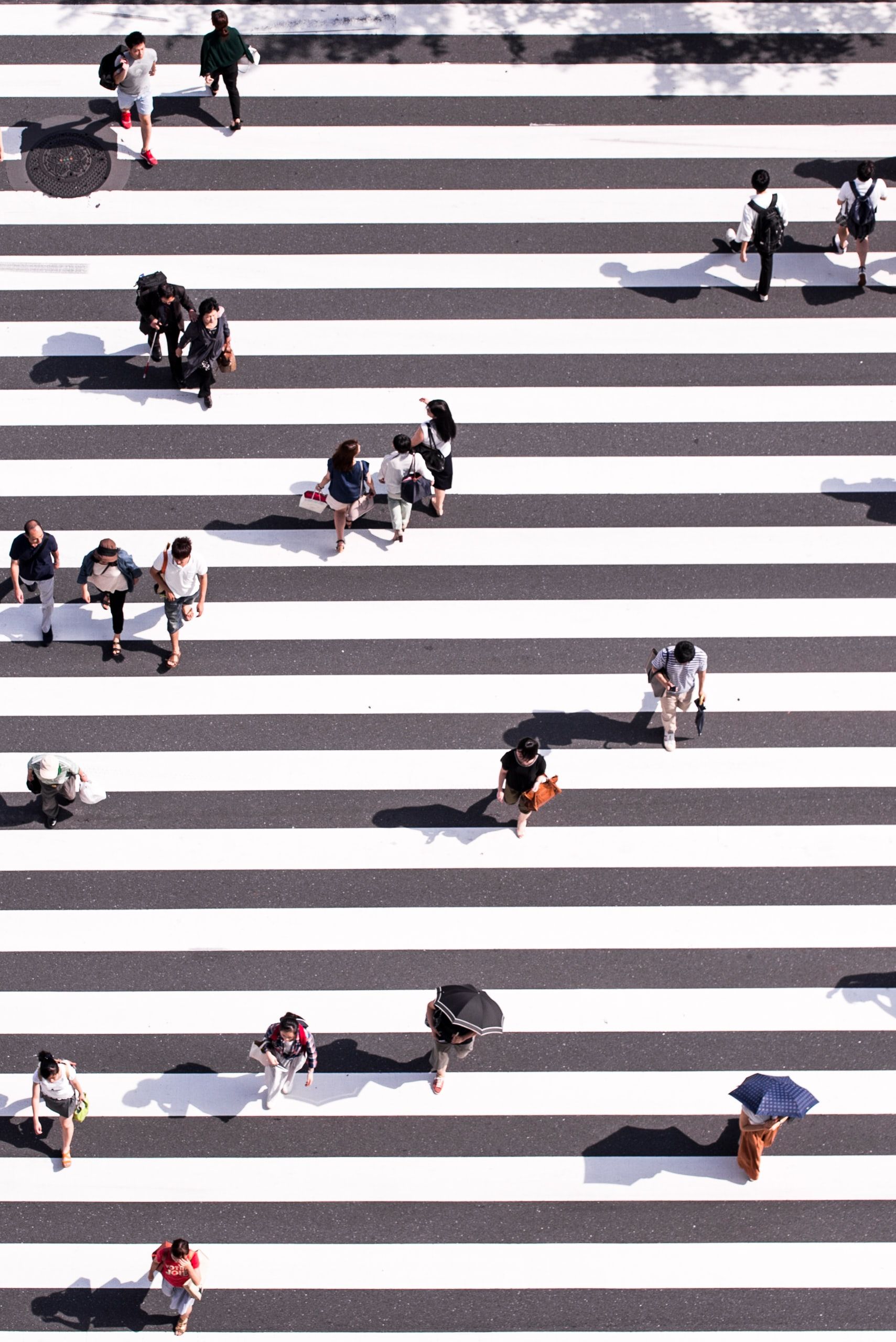Citizen Walkers | Pt.1

Adam Davidson is an adjunct faculty member in the Judy Genshaft Honors College at the University of South Florida (USF). He teaches courses on knowledge and ethics, popular music, and walking! His walking course is called Citizen Walkers and the course perfectly embodies the very heart of the Be Pedestrian column. Here is the course description that students sign up for:
This course explores the political, economic, ethical, and social impact(s) of the mundane and everyday practice of walking. Marching for justice, raising money for cancer, seeking spiritual healing, calling attention to climate change, engaging with history and memory, and maintaining physical fitness (among many others!) all attest to the power and importance of walking in our lives and societies. Through embodied practice, theoretical analysis, and personal reflection we seek a greater awareness and understanding of the ways walking moves beyond the mere utility of traveling from point A to point B, and we challenge ourselves to engage with practices that contribute to the betterment of ourselves and our communities. In that light, we will also explore conceptions of citizenship and how/why some, but not all, conceptions compel us to engage our bodies and often our feet -- interacting with and interrogating these conceptions through our embodied practice (i.e. walking!).
All abilities and disabilities are welcome as we explore the implications of how diverse bodies move in and through our communities and how our communities engage with and accommodate all bodies. A cellphone or other photo/video recording device is required.
We reached out to Adam and asked if he would be willing to contribute to this column. He shared a paper that he was just finishing up. It’s a bit long for a single post but is nicely broken up into four specific sections/points. So today we are beginning a 4 week series from Adams' paper. We are so grateful and excited to be able to share his thinking and perspective with all of you! Below is the intro and the first section:
Citizen Walkers and the Challenge to Rethink the Everyday
I teach about walking. The first time I mentioned that to a colleague, he laughed and sort of poked fun at me for the rest of our conversation. All in good fun. But it stuck with me as I realized that, when talking to others who asked about the class, I often have to explain and justify the idea over against their looks of suspicion and cynicism. But that’s not always the case. One friend nearly came out of her seat she was so excited and wanted to know more and more and immediately started scheming about how she could audit the course. (which is a little funny now that I reflect on it - how do you audit a walking course?)
Still, the questions and puzzled expressions have made me take stock of why I do what I do, and it has helped me solidify some really basic values for the course, even if they don’t seem all that academic, and, as a result, that first friend, the one who laughed, might still chuckle and roll his eyes at me. Whatever. He can take a hike!
Everydayness: How much do you actually ever think about walking? Now that we all carry some kind of device counting our steps, probably more than you used to. But step counters actually reinforce the point. Walking is something we do all the time, everyday – something that can be easily and substantially measured but often isn’t unless there’s some device to do it for us. And when that happens, in a strange reversal, it can become a source of obsession and anxiety (more on that in a minute).
Not all can walk, for sure, but what I mean here is not so much about the mechanics of walking (the how and the who), but more about its ubiquitousness, its everydayness – and how we usually take it for granted. We don’t think about it. Walking is so basic and ordinary in most of our lives, that that is actually what makes it interesting and important. We don’t give it much thought and that means we probably should. I want my students to be reflective about walking, not only to understand the impacts of walking but also to consider the reasons why we don’t think much about it. Inside these kinds reflections on walking as an everyday practice are connections and relationships we usually also don’t give much thought to, even though they order our day, reveal our priorities and prejudices, and reflect our values. Perhaps, understanding the value of walking, particularly as an everyday practice, is to begin to see value in all kinds of ordinary, pedestrian activities – things that fill much of our lives and bring at least as much meaning and rhythm as the major stuff.
I have a disabled son who does not walk. It may seem ironic or strange, then, that I teach walking. I am not going to address in detail the intricacies of disability and its complex relationship to able-bodied practices like walking in this piece. Many who cannot walk in the conventional sense still use the term, and my son and I go out for walks together all the time – me on my feet and he in his wheelchair. Reflecting on the everydayness of walking helps us begin to apprehend the different ways it works for other people. Not being able to walk may be a source of deep, abiding frustration and isolation and can have significant long term health outcomes. Others, like my son, enjoy walking in whatever means it occurs, with wheels, assistance or otherwise. His movement about the world is just as everyday, though his participation in walking often necessitates the involvement of another.
